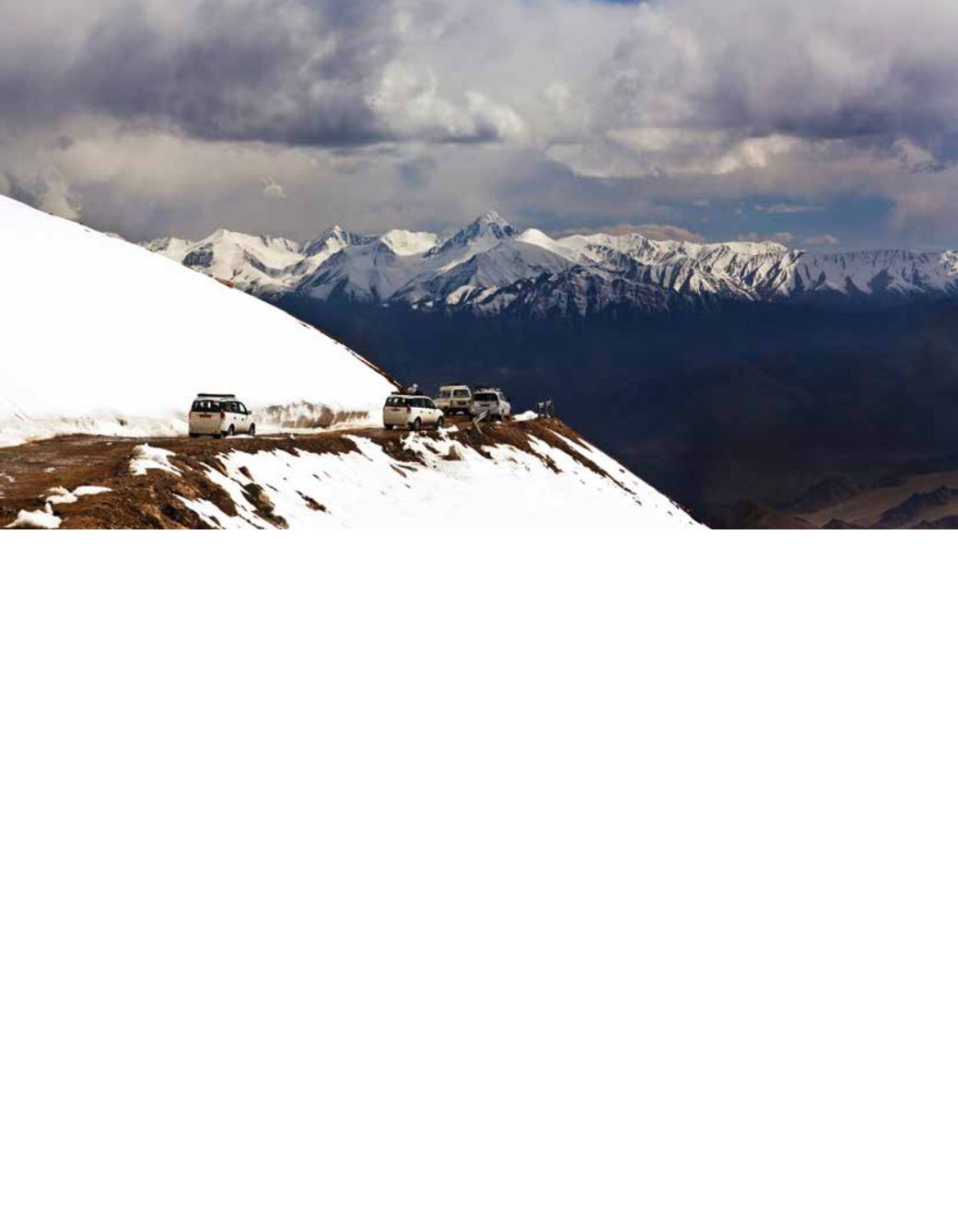
B
elow, the churning waters
of the Shayok River, above,
a cloudless Himalayan
sky, and all around, the
soaring snow-capped peaks of the
rugged Karakoram mountain range.
I’m river rafting at 11,000 feet in
the Nubra Valley in Ladakh, India’s
northernmost state, and the scenery is
as breathtaking as the shock of glacier-
melt water that slaps me back to the
moment. We paddle hard and then
we’re through the rapids. Drifting on a
calmer stretch of the broad, chocolate-
coloured river, I take stock. Today
is the second last day of my week in
Ladakh with Shakti, the only luxury
tour operator in this isolated plateau
state, and I don’t want to go home.
Also known as ‘Little Tibet’, due
to proximity and similarities, Ladakh
is a corner of India that is anything
but hot and crowded. Only accessible
during the summer months (May to
October), when days are pleasantly
warm and nights are crisply chilly; the
region is snowbound the rest of the
year. It’s sparsely populated and starkly
beautiful, comprising 45,000km²
of high altitude desert, deep azure
To the Moon &
As remote as the moon yet far
more accessible, Ladakh is the
adventurous family's dream
destination in India,
writes
Laura Miller.
lakes and the Kunlun and Greater
Himalayan mountain ranges. It’s also
the subcontinent’s best-kept travel
secret. While it may feel as remote as
the moon, with a desolate stone-strewn
landscape in parts fueling this illusion,
Ladakh’s village-like capital Leh is just
an hour’s flight north of Delhi.
Ladakh disappeared off the tourist
map in the late 1990s, but in the last
decade, backpackers have rediscovered
Leh, giving it a hippie ‘Goa-in-the-
mountains’ feel. Leh is first glimpsed
from the sky as a splash of green,
contained as a verdant shimmer of
paint on an artist’s palette of dusky
browns. But the discerning traveller
heads out onto the dramatic, and
otherwise inaccessible Ladakhi plains
with Shakti. Catering to a maximum
of six travellers per trip, Shakti offers
accommodation in seven authentic
farmhouses in Ladakhi villages,
without a tourist in sight.
Stok
Finding yourself at 11,500 feet is a
good reason to take it easy and avoid
altitude sickness. But chilling in a place
like Stok is anything but a hardship.
An oasis of green fields around white-
washed houses, Stok is the epitome
of bucolic bliss: Boys herd goats from
pasture to pasture and families stop
harvesting apricots to wave from
their orchards as you pass by. The
air has a 3D quality to it, so clear
that everything seems to be leaping
joyously towards you. And there is
much more colour than expected,
from sunny yellow mustard fields and
the odd patch of lavender, to the bright
fluttering of prayer flags on every
rooftop.
Ladakh is one of the most
intact Tantric Buddhist societies
left on earth, and is as famed for its
spectacular hilltop monasteries as
for the friendliness of its people. Its
population – a unique blend of many
different races, predominantly the
Tibetans, the Mons and the Dards
– is less than 300,000, and ancient
traditions, dress and cultural mores
are still intact. The natural joie-de-
vivre of the people is given free rein
during socio-religious festivals, usually
celebrated with archery competitions,
polo, and singing and dancing into the
night.
L A D A K H
62
Playtimes


